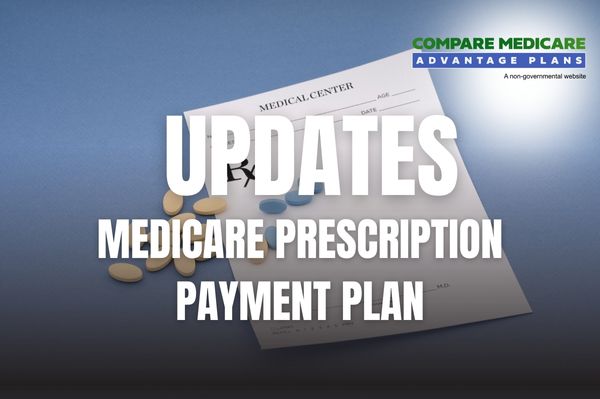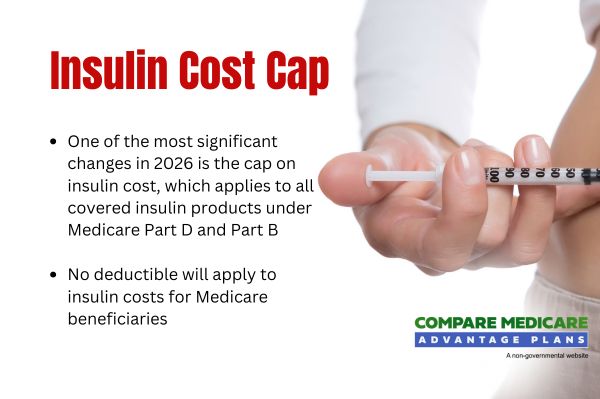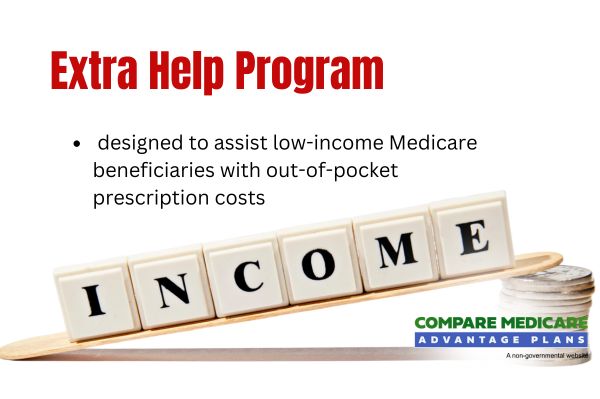




Medicare Changes Coming in 2026
Possible changes to Medicare in 2026 could impact your healthcare costs and coverage. From prescription drug payments to potential out-of-pocket limits, here’s what you should know to stay prepared.
Key Takeaways
- Potential changes to Medicare in 2026 may include automatic re-enrollment in the Medicare Prescription Payment Plan and an out-of-pocket prescription drug cost cap.
- Insulin costs might be capped with lower deductibles, and adult vaccines may see lower cost-sharing, likely promoting affordable healthcare access.
- Beneficiaries should conduct an annual review of their Medicare plans to adapt to possible changes in coverage, costs, and provider networks, ensuring optimal healthcare choices.
Compare Plans in One Step!
Enter Zip Code
Possible Updates to Medicare Prescription Payment Plan

The Medicare Prescription Payment Plan may undergo significant changes in 2026. Possible updates might include:
- Automatic re-enrollment of beneficiaries into the MA PD plan
- An option to opt out within three days
- Automatic transition into the plan unless you opt out, which could help to maintain continuous coverage
The payment plan may also spread out-of-pocket prescription drug monthly payments throughout the year, possibly offering financial relief and predictability. Regardless of your prescription drug expenses, you could join this plan to help manage costs more effectively. This approach could be particularly beneficial for those on fixed incomes or with limited financial resources.
This initiative likely aligns with broader CMS efforts to potentially reduce out-of-pocket costs. Increased enrollment in the Medicare Prescription Payment Plan may also help to streamline payment processes and possibly make managing medicare prescription drug expenses easier.
Out-of-Pocket Prescription Drug Limits
The cap on out-of-pocket prescription drug costs for Medicare Part D may change in 2026, which will likely be part of a broader effort to make prescription drugs more affordable and accessible to Medicare beneficiaries. This could provide a clear limit on spending, possibly preventing beneficiaries from being overwhelmed by unexpected high drug costs.
To further assist beneficiaries, some Medicare Part D plans may also offer the option for monthly capped payments for certain out-of-pocket prescription drug costs. This could mean that instead of facing large, unpredictable expenses, you could potentially opt for a more predictable monthly payment Part D plan. This change could potentially ease the financial burden for those with high prescription drug costs, likely facilitating better budgeting and financial planning.
These potential updates will likely be part of the Inflation Reduction Act, which aim to help lower out-of-pocket costs for prescription drugs for Medicare Part D members. The potential capping out-of-pocket expenses and monthly payment options may also provide financial relief, especially for those with chronic illnesses or high medication needs.
Medicare Part D Deductible
In 2026, the standard Medicare Part D deductible might increase, meaning that beneficiaries will likely need to meet this higher deductible amount before their Medicare Part D prescription drug benefits kick in. This possible change might challenge some, but understanding its role in the broader context of costs and benefits is important.
Reviewing your current Medicare plan could help you understand how the new deductible might affect your overall healthcare expenses. Planning for these changes could help you manage costs without compromising access to essential medications.
Insulin Cost Cap

Another possible change in 2026 might be a cap on insulin costs. This cap will likely apply to several covered insulin product under Medicare Part D and Part B, possibly ensuring that beneficiaries could have access to affordable insulin without facing prohibitive costs.
Additionally, deductibles might not apply for certain insulin costs for Medicare beneficiaries. This means that you could potentially access your necessary insulin at the capped price without having to meet a deductible first. This potential change may also provide financial relief to those managing diabetes, likely making it easier to maintain their health without the stress of high drug costs.
Cost-Sharing for Adult Vaccines
In 2026, Medicare might reduce cost-sharing for certain adult vaccines. This means that Medicare beneficiaries might not have to pay out of pocket for vaccines recommended by the CDC’s Advisory Committee on Immunization Practices. This possible change will likely be part of a broader effort to help promote preventive healthcare and possibly reduce the incidence of vaccine-preventable diseases among adults.
This may also aim to increase vaccination rates and possibly ensure more beneficiaries could get access to essential immunizations without financial barriers. This initiative likely underscores the importance of preventive health care and the broader goals of improving public health.
Potential Introduction of Prior Authorizations
Prior authorizations for traditional Medicare might be implemented in several states, such as :
- New Jersey
- Ohio
- Oklahoma
- Texas
- Arizona
- Washington
This means that certain medical services and procedures may require approval before they can be provided, ensuring that they are medically necessary and appropriate.
The final decisions on prior authorization requests will likely be made by licensed clinicians, will likely streamline the process, possibly reducing unnecessary healthcare services, and manage healthcare costs more effectively.
This potential change may add steps for beneficiaries but could enhance the overall efficiency and effectiveness of Medicare.
Possible Changes to Medicare Advantage Plans

Medicare Advantage plans might see some changes in 2026. New regulations might limit these plans’ authority to modify previously approved inpatient admissions, likely ensuring that beneficiaries could receive the care they were initially promised. This potential restriction will likely be part of a broader effort to help protect beneficiaries and possibly reduce the administrative burden associated with frequent changes to approved services.
Additional standards may also be set for Dual Eligible Special Needs Plans (D-SNPs), serving individuals eligible for both Medicare and Medicaid. These potential changes could help improve care quality and support for vulnerable beneficiaries, possibly ensuring they receive comprehensive and coordinated healthcare services.
Annual Review of Medicare Plans
Medicare beneficiaries should review their plans annually to adapt to possible changes in coverage, cost, and available providers. During the Medicare open enrollment period, individuals can explore new plans and modify to their existing coverage, likely ensuring they could get the best possible plan for their needs.
An annual review of your Medicare plan may also allow for comparison of options and informed decisions about healthcare coverage. This could help identify potential changes in your current plan that might impact healthcare costs or access to services. State SHIP programs offer personalized guidance to help beneficiaries navigate their Medicare options, providing support during decision-making.
Reviewing your plan each calendar year could help ensure you make the most of your Medicare benefits and avoid potential coverage gaps. This proactive approach will likely be crucial for maintaining health and managing healthcare expenses effectively.
Extra Help Program

The Extra Help program, designed to assist low-income Medicare beneficiaries with certain out-of-pocket costs, may also see changes in 2026. These potential changes might include additional benefits to help cover certain out-of-pocket costs, possibly ensuring that eligible beneficiaries could receive comprehensive financial support.
To qualify for the Extra Help program, beneficiaries must meet certain income level requirements:
- Their income must be less than 150% of the federal poverty level.
- Individuals who receive Medicaid or state-sponsored assistance for Part B premiums may automatically qualify.
- This may also include those receiving Supplemental Security Income, particularly those with limited income.
These potential changes could offer stronger support, possibly reducing the financial burden of prescription drug costs for low-income beneficiaries.
What You Can Do Now to Prepare
To get ready for the potential Medicare changes in 2026, several steps should be taken. First, review and compare available Medicare Advantage plans to find one that best fits your healthcare needs. This will likely help you identify a Medicare Advantage plan that offers the most comprehensive coverage and best value for your situation.
Contacting your local State Health Insurance Assistance Program for personalized guidance is also advisable. These programs offer valuable support and help navigate Medicare complexities, ensuring informed decisions about coverage.
Additionally, ensure your preferred doctors and pharmacies are in-network with your chosen plans to maintain continuity of care. Reviewing estimated annual medication costs may also help you budget and prepare for the possible changes in healthcare expenses.
Summary
The potential changes to Medicare in 2026 will likely be designed to enhance coverage, possibly reduce out-of-pocket costs, and help improve the overall efficiency of the program. From potential caps on prescription drug costs and insulin to the Prescription Payment Plan, these adjustments will likely have a significant impact on Medicare beneficiaries. By staying informed and proactive, you could navigate these potential changes and make the most of your Medicare benefits.
As you move forward, it is essential to review your Medicare plan annually, explore the available options during the open enrollment period, and seek personalized guidance from SHIP programs. By taking these steps, you could ensure that you are well-prepared for the possible changes ahead and continue to receive the healthcare coverage you need.
Frequently Asked Questions
→ What might happen to the cost-sharing for adult vaccines under Medicare Part D starting in 2026?
There may be a lower cost-sharing for adult vaccines under Medicare Part D, possibly making vaccinations more accessible for beneficiaries.
→ Which states might begin using prior authorizations for traditional Medicare in 2026?
New Jersey, Ohio, Oklahoma, Texas, Arizona, and Washington may implement prior authorizations for traditional Medicare. This could affect how care is managed in these states.
→ What should Medicare beneficiaries do annually regarding their Medicare plans?
Medicare beneficiaries should annually review their Medicare plan to compare options and ensure they are receiving the best coverage for their needs. This proactive approach could help to optimize benefits and address any changes in health or circumstances.
→ What will be the cap on out-of-pocket prescription drug costs in 2026?
Unfortunately, the plan benefits for 2026 have not been released, but make sure to check back in to this article/website for updated information for the 2026 calendar year.

ZRN Health & Financial Services, LLC, a Texas limited liability company



